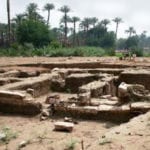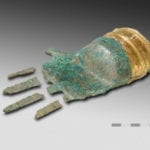 Technology
Technology  Technology
Technology  Humans
Humans 10 Everyday Human Behaviors That Are Actually Survival Instincts
 Animals
Animals 10 Animals That Humiliated and Harmed Historical Leaders
 History
History 10 Most Influential Protests in Modern History
 Creepy
Creepy 10 More Representations of Death from Myth, Legend, and Folktale
 Technology
Technology 10 Scientific Breakthroughs of 2025 That’ll Change Everything
 Our World
Our World 10 Ways Icelandic Culture Makes Other Countries Look Boring
 Misconceptions
Misconceptions 10 Common Misconceptions About the Victorian Era
 Mysteries
Mysteries 10 Strange Unexplained Mysteries of 2025
 Miscellaneous
Miscellaneous 10 of History’s Most Bell-Ringing Finishing Moves
 Technology
Technology Top 10 Everyday Tech Buzzwords That Hide a Darker Past
 Humans
Humans 10 Everyday Human Behaviors That Are Actually Survival Instincts
 Animals
Animals 10 Animals That Humiliated and Harmed Historical Leaders
Who's Behind Listverse?

Jamie Frater
Head Editor
Jamie founded Listverse due to an insatiable desire to share fascinating, obscure, and bizarre facts. He has been a guest speaker on numerous national radio and television stations and is a five time published author.
More About Us History
History 10 Most Influential Protests in Modern History
 Creepy
Creepy 10 More Representations of Death from Myth, Legend, and Folktale
 Technology
Technology 10 Scientific Breakthroughs of 2025 That’ll Change Everything
 Our World
Our World 10 Ways Icelandic Culture Makes Other Countries Look Boring
 Misconceptions
Misconceptions 10 Common Misconceptions About the Victorian Era
 Mysteries
Mysteries 10 Strange Unexplained Mysteries of 2025
 Miscellaneous
Miscellaneous 10 of History’s Most Bell-Ringing Finishing Moves
Top 10 Ancient Constructions Steeped In Mystery And Revelation
Ancient constructions are like portraits of the civilizations who built them. In a way, they’re the ancient equivalent of modern-day selfies. But while our selfies are usually straightforward, easy to understand, and apply to only one or a few people, ancient constructions can be steeped in mysteries that concern entire cultures.
Although civilizations disappear, their physical projects can survive for thousands of years. The way ancient societies built and where was rarely without purpose. From unusual graves to unexpected cities, these structures can confirm theories, reveal clues to old mysteries, or thicken the plots even more.
10 Teotihuacan’s Tunnels

In 2017, a restoration project was launched to repair one of Mexico’s most famous sites—the pre-Aztec city of Teotihuacan. While working in the central square, archaeologists used a noninvasive technique to peer underground.
Called electrical resistivity tomography, the scan returned an unexpected feature. Below the square was a tunnel. It snaked toward and underneath a nearby pyramid. The Pyramid of the Moon is a massive feat of architecture, and why the two should be linked by a shaft is not fully understood.
For the time being, it cannot be explored. One reason is depth. The new structure is 10 meters (33 ft) deep. But the tunnel matches another one previously discovered under one of Teotihuacan’s temples.[1]
Considering that they were constructed by a people who lived 2,000 years ago, it could be hard to say if the tunnels served a practical or mystical purpose. However, the team who discovered the latest one leaned toward a spiritual explanation. They feel that the shafts mirror the city’s best monuments and may even represent the anonymous civilization’s underworld.
9 Purpose Of The Tjungundji Mounds
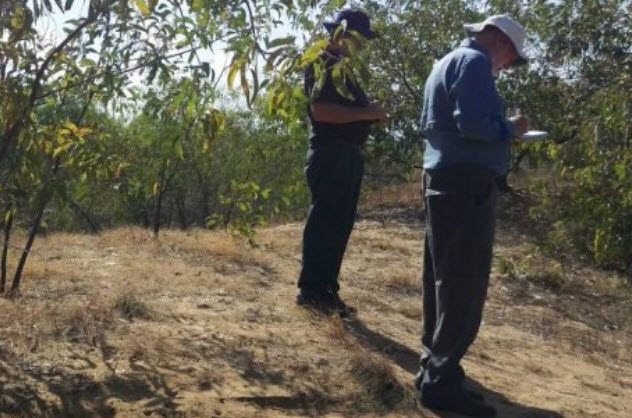
For more than 60 kilometers (37 mi), large mounds buckle the earth along western Cape York, a coastal area in Australia. Researchers have been debating the specifics of the phenomenon for years.
Apparently, they were not taking the local aboriginal community seriously. (The Tjungundji people claimed that their ancestors were buried in the mounds.) So the theories got strange. For example, some suggested that birds were responsible for the 250 humps.
In 2018, radar proved that the locals and the archaeologists who considered the mounds to be artificial were right. Eleven of the sand structures were scanned, and many still held human remains.[2]
Mapping the interior also identified some of the funerary activities and how they changed over time. Within different layers, artifacts decorated each tomb. These included flowers, spears, and coral.
The age of the mounds is uncertain, but some could be as old as 6,000 years. This was about the same time that the Egyptians constructed the pyramids.
8 Unique Urban Complex
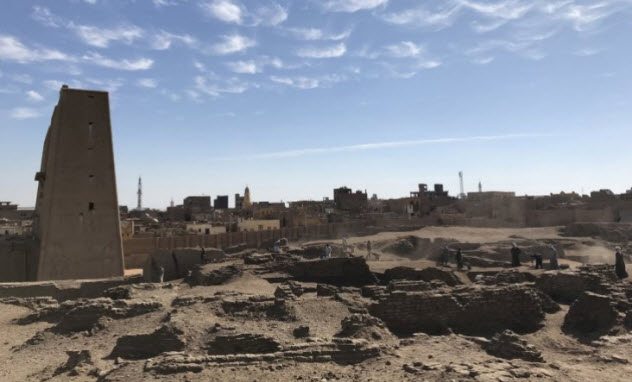
In 2018, excavations in Egypt’s Tel Edfu found a two-building complex. At 4,000 years old, it ranked among the earliest of the region’s numerous large ruins. Archaeologists identified rooms used for storage, to smelt copper, and to make beer and bread.
Other aspects were puzzling. The biggest building’s outer facades slope in a way that was not popular in ancient Egypt. Yet, the facades were masterfully constructed using this peculiar style.
Another mystery is why people left it alone after it was abandoned. Similar sites were stripped of their bricks for other building projects. The complex not only kept its walls, which were thicker than a man was high, but also its front door. Made of an Egyptian rarity—wood—it should have been looted long ago.
This brewery-bakery is unlike any other seen from the Old Kingdom. It is the first indication that the ancient city of Edfu was included in the royal decision to raise important settlements outside the major cities.[3]
As little information exists about this expansion, the complex is a valuable find. It would appear that Edfu became a preferred departure point for expeditions setting off for distant destinations.
7 A Church-Sized Villa
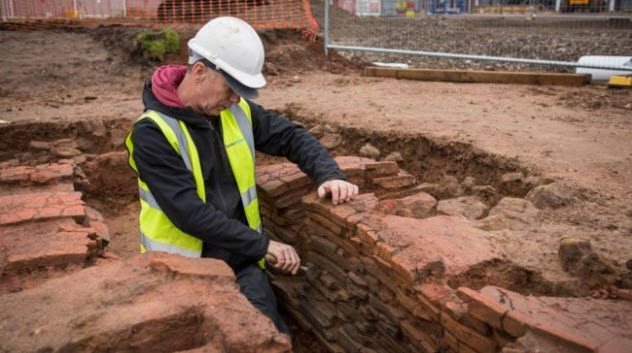
The English town of Warwick recently decided to move its high school. Builders got busy near Banbury Road when they unearthed a large Roman villa. Hailed by archaeologists as rare ruins, it covered an area that was 28 meters (92 ft) long and 14.5 meters (48 ft) wide. In their own words, it was “the size of a medieval church.”
Cut from local sandstone, it was likely part of a vast estate from the second century AD. The villa itself would have been the most imposing building of all. Also, as the biggest structure in the region, it would have been connected to a Roman road.
The discovery of corn drying ovens showed that the building had played an agricultural role in addition to being somebody’s home. Whoever occupied the villa’s domestic suites abandoned it around 200 years later.[4]
6 Stonehenge Architects’ Camp
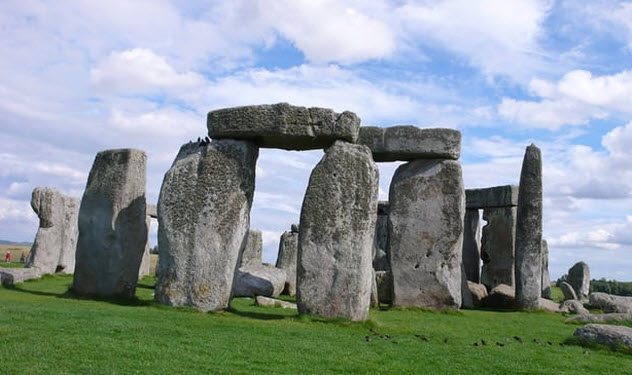
A short walk from Stonehenge, the military owns land at Larkhill. During preparations for new army buildings in 2018, an ancient enclosure was unearthed. To be more exact, it was a causewayed enclosure. Such places are believed to be where ancient trade and meetings occurred.
Nine wooden posts threw some light on the kind of people who stayed at the site. The posts’ positions were a replica of Stonehenge’s stone ring. This suggested that Larkhill was a kind of design hub to overhaul the famous temple, which also started out as a humble ring of timber posts.
The initial version of Stonehenge was erected around 3000 BC, but archaeologists believe that the enclosure predates it by six or seven centuries. It likely served as the campsite of the architects when the first stones were brought in around 2500 BC.[5]
5 The Solstice Fort
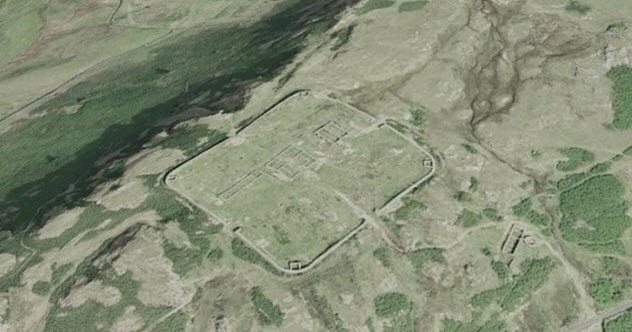
During the rule of Roman Emperor Hadrian (r. AD 117–138), the empire’s territory included parts of Britain. To safeguard this frontier, several forts were constructed.
One fortification stands near Hardknott Pass in Cumbria. It looked normal until 2015 when its gateways were found to align with both solstices. Set in the square building, the gates face each other in two pairs.[6]
On the longest day of the year (summer solstice), the sunrise aligns with the northeastern and southwestern gates and the Sun sets along the northwestern and southeastern gates. On the shortest day (winter solstice), the process repeats but in reverse.
Why this particular fort was designed for a celestial light show is not fully understood. It is also unclear why four towers appeared to be aligned with the main points of the compass.
One plausible idea suggests a religious connection. Solar alignments are a common theme in several ancient religions. In this case, reverence could have been shown to Sol, the Roman Sun god, or Mithra, the god of light that was a popular deity among the Roman military.
4 Moche Hall And Throne
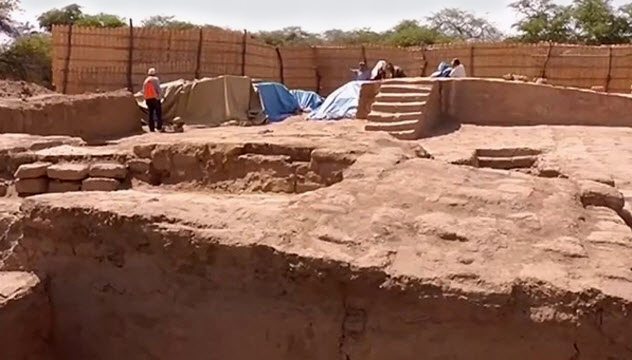
A remarkable find was made public in 2018 after Peruvian archaeologists investigated the Huaca Limon de Ucupe monument. They found two chambers from a mysterious people.
Long before the Inca, the Moche nation rose in Peru. For centuries until AD 700, they existed as a splendid culture that left behind monuments, gold artifacts, and expert agricultural engineering. Any new finds may help to explain the culture’s puzzling disappearance or at least teach us more about them.
This new complex could add to our understanding of Moche ceremonies. One chamber was a fine ritual hall. Unlike geometric and mythical murals found elsewhere, the hall’s walls were adorned with realistic sea scenes. One painting stretched 10 meters (32 ft) long.[7]
Over 100 nooks once held plates, hinting at large and varied banquets. Two stepped thrones faced each other. The highest was meant for the ruler, and the other probably held the patron of the feast.
A porch connected the two chambers. Near the door of the other room was a podium, perhaps to make announcements during meetings. Elite meetings have only been seen in Moche art.
The complex is the first physical venue to be discovered. Not all ceremonies involved fine dining, however. Skeletal remains indicated that human sacrifice also took place.
3 Strange Stone Age Burial
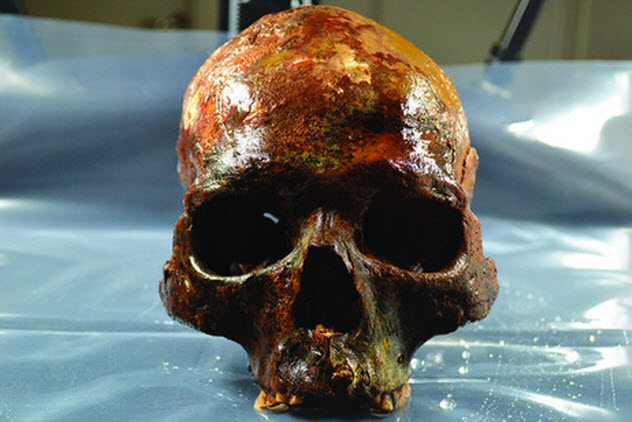
Ahead of a building project in Sweden, archaeologists swept a swath of land. Kanaljorden was already an archaeological site, but in 2009, it yielded a grave that stumped even the experts.
Lacking jaws, 11 skulls rested on a huge limestone platform measuring 12 by 14 meters (39 by 46 ft). When constructed 8,000 years ago, it was at the bottom of a lake. There was also the skeleton of a newborn and animal bones. Why they were “buried” underwater is just one of the grave’s mysteries.
Seven skulls showed blunt force trauma. The men had been struck from above or the front, the women from behind. However, sacrifice was unlikely. The healing fractures showed that they lived for some time afterward.[8]
The bones were also strangely arranged. The humans were in the middle, with two of the skulls pierced with stakes. To the south were bear bones. Wild boar, deer, and moose decorated the southeastern part. Also, most of the bones belonged to the right side of the body.
Perhaps they were victims of a raid and the funeral was especially complex to honor them. In truth, researchers cannot make sense of the ritual’s location or meaning.
2 100 Cult Sites
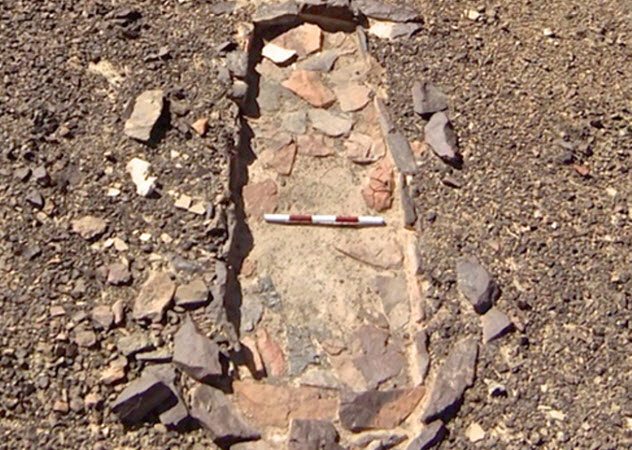
In 2015, around 100 ritual sites were found in Israel’s Eilat Mountains. Located in the Negev Desert, stone circles and phallus-shaped structures appeared in dense clusters. Within one area of 200 acres, archaeologists counted 44 cult locations.
Though little is known about what transpired at these places, the themes of fertility and death abounded. Built around 8,000 years ago, the sites included male symbols, such as the stone phalli, pointing at “female” stone circles with diameters of 1.5–2.5 meters (5–8 ft).
Death was signified by burying stone objects upside down. Flat areas with a good view were chosen as locations. But as prolific as the cult sites were, only three domestic ones were found.
Considering the small population, desert conditions, and terrain, the sheer number of monuments is a mystery. In addition, they appear to be the tip of the iceberg. Similar finds continue to be made elsewhere. One survey detected 349 sites outside the Eilat Mountains.[9]
1 Thousands Of Mayan Structures
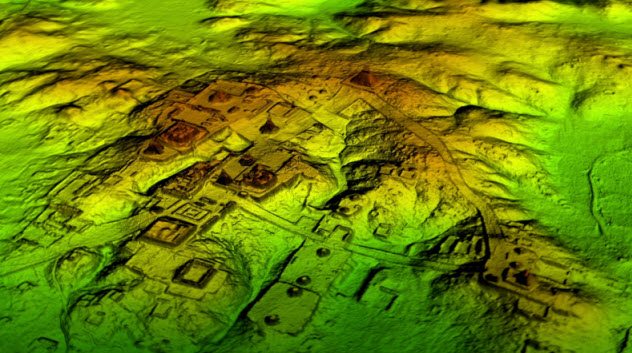
During a recent aerial survey of northern Guatemala, over 60,000 unknown Mayan works were added to the map. The forest-penetrating scans revealed pyramids, walls, urban foundations, causeways, and defenses—all within an area of 2,100 square kilometers (810 mi2).
The survey revealed brand-new locations to study but also immediately clarified other aspects about the civilization. The number of private homes suggested that the Maya outnumbered those living in the area today. They avoided the slash-and-burn agriculture of modern farmers, proving that it is possible for a large population to flourish without deforestation.
One fortification was a wall sturdy enough to show that the Maya engaged in serious warfare. Though most of the new structures are houses, the number of roads was just as surprising.
The places where the Maya never laid a brick are also valuable. They were masters of their environment, and studying the settlement pattern could uncover their techniques for farming and water management.[10]
The overall picture is not just changing beliefs about the population and how they managed the land. It is also opening the door to understanding Mayan traveling networks, community organization, and communication.
Read more about fascinating examples of ancient construction on 10 Amazing Examples Of Ancient Construction and Top 10 Ancient Constructions With Fascinating Tales And Riddles.




